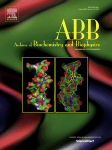Paper by Taylor, Students Show How Enzymes Break down Lignin

Erika Taylor, assistant professor of chemistry, assistant professor of environmental studies, is the author of a paper “Exploring Allosteric Activation of LigAB from Sphingobium sp. strain SYK-6 through Kinetics, Mutagenesis and Computational Studies,” published in Archives of Biochemistry and Biophysics, Vol, 567, pages 35-45, February 2015.
Co-authors include graduate students Kevin Barry and Joy Cote; Erin Cohn ’15, Abraham Ngu ’13 and former graduate student Jason Gerbino.
Development of renewable alternatives for petroleum derived fuels and chemicals is of increasing importance because of limits on the amount of fossil fuels that are available on the planet. In an effort to improve the utilization of lingo-cellulosic biomass sources (which includes switchgrasses, trees and other terrestrial plants) for the production of these chemicals, Taylor and her students have been working to enhance the understanding of how Lignin is broken down in nature (by environmental fungi and bacteria). As part of this work, they study an enzyme called LigAB from Sphingobium sp. strain SYK-6.
In a recent study, Taylor’s group showed that this enzyme works faster in the presence of vanillin, a molecule that is produced in large quantities as Lignin is depolymerized (which also is the primary ingredient in vanilla extract).
“The activation of LigAB is exciting because the enzymes that break down vanillin show that an organism can more efficiently metabolize all of the compounds — or get energy from the abundant molecule more quickly. This is the first time that an enzyme like LigAB has been shown to be responsive to other metabolically linked molecules, and it suggests that the flux of compounds through this pathway may be more complicated and interesting that initially predicted,” Taylor said.
Now, the group is interested in figuring out exactly how this activation works and also if there are any relatives of LigAB that exhibit similar behavior.

